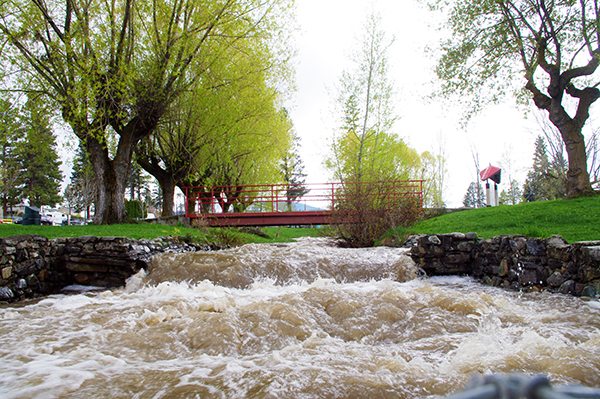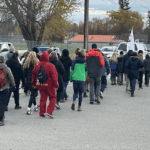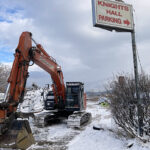Home »

Safety tips near floodwaters and preparing effective sandbags
As areas in the central and southeast regions of British Columbia are experiencing recent flooding events, homeowners need to be vigilant with their safety, first and foremost.

Individuals are advised to stay away from floodwaters. If you come upon a flowing stream where water is above your ankles, stop, turn around and go the other way – six inches of swiftly moving water can sweep you off of your feet.
Never underestimate the swiftness of the water – flooded rivers and streams are unpredictable. Even though the surface water may be smooth, the water is moving very fast. If you have to walk in water, wherever possible, walk where the water is not moving. Use a stick to check the firmness of the ground in front of you.
Never attempt to drive or walk in flood water. A mere six inches of fast-moving water can knock over an adult. Two feet of rushing water can carry away most vehicles, including SUVs and pick-up trucks.
Sandbagging
To minimize flood water damage, sandbagging is one of the most versatile flood fighting tools and is a simple, effective way to prevent or reduce flood water damage. Homeowners who are preparing homemade sandbags need to be aware of the proper steps to take:
* Two people should be part of the sandbagging process. It will take about one hour to fill and place 100 sandbags, giving you a 1-x-20-foot wall.
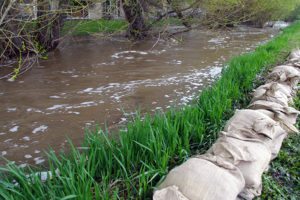 * Make sure you have enough sand, burlap or plastic bags, shovels and time to properly prepare.
* Make sure you have enough sand, burlap or plastic bags, shovels and time to properly prepare.
* Contact your local government for information on obtaining sandbags.
Fill materials
* Sand is by far the easiest material for filling and shaping sandbags and becomes heavier when saturated from rain or moisture.
* In emergencies, other materials such as silt, clay, gravel or a mixture of these may be used, but none work as well as sand.
* When vehicle access is cut off to the flood site, and you have no other choice, use the back side of the levee or an adjacent field to find whatever material is available to fill sandbags.
Proper filling procedure
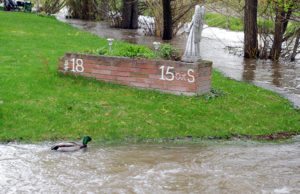 * Always use gloves, and avoid touching your eyes and mouth.
* Always use gloves, and avoid touching your eyes and mouth.
* Filling sandbags is normally a two- to three-person task.
* One member while crouching with feet apart and arms extended places the bottom of the empty bag on the ground.
* The opening of the bag is folded outward about 1 to 1.5 inches to form a collar and held open to allow the second team member to fill with material – approximately one-half or two-thirds full, and then fold them over.
* Don’t hurry, haste can result in undue spillage and additional work.
* The third team member stockpiles or stacks the open sacks.

Proper placement
* Remove any debris from the areas where bags are to be placed.
* Place the bags lengthwise and parallel to the direction of flow.
* Fill the low spots first before placing bags the full length of the area to be raised.
* Start at approximately one foot landward from the river or levee’s edge.
* Fold the open end of the bag under the filled portion. The folded end of bag should face upstream.
* Place succeeding bags with the bottom of the bag tightly and partially overlapping the previous bag.
* Offset adjacent rows or layers by one-half bag length to avoid continuous joints.
PreparedBC Flood Information for Homeowners and Home Buyers guide.


Lead image: A badly timed torrential downpour on Friday, May 5 combined with a recent warm spell engorged Joseph Creek, which runs through Cranbrook to the St. Mary River at St. Eugene. The flooding creek encroached on Highway 95A Saturday. Carrie Schafer/e-KNOW photo
Emergency Info BC

